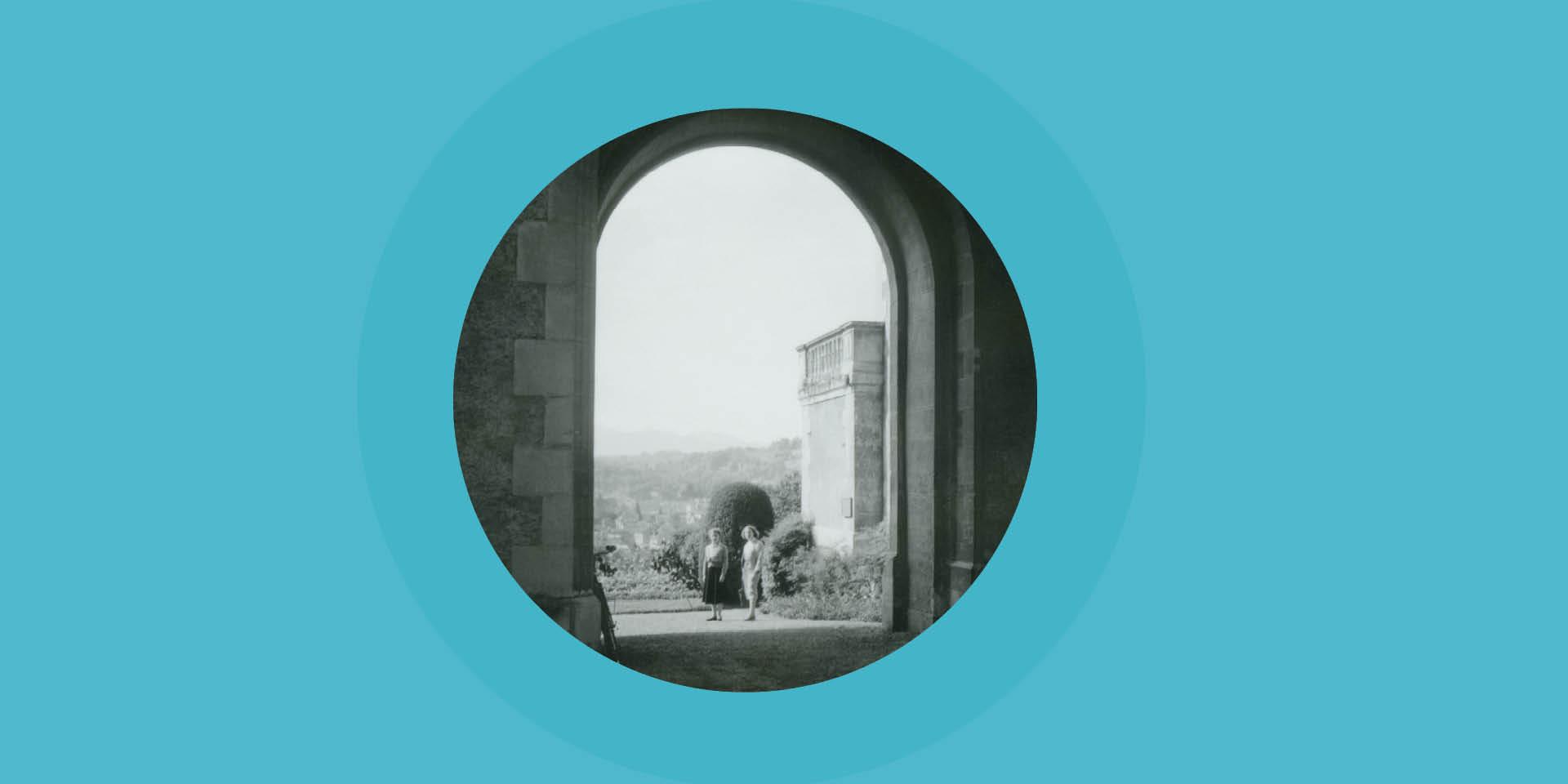Au gré du visiteur
Becoming a national museum between 1921 and 1927, during the 20th century the Château de Pau experienced decades when it was very busy. In 1960, there were more than 203,000 visitors, a sign of its fame and its integration into the major tourist routes, in part due to the increase in photography from the end of the 19th century, and in particular the abundant repertoire of postcards. Private photography, as practiced by individuals and affecting an ever wider strata of the population, added to this production as early as the 1920s and still continues to increase the supply of images of historical, architectural and natural sites. Families began to create a new heritage, but it was not until the turn of the 2000s that it attracted the interest of researchers and museums.
This exhibition revisits the great adventure of photography created by ordinary visitors, focusing on a selection of sixteen views, from 1910 to 1960, taken from a single private collection. The choice takes human presence for granted (often family or loved ones of the photographer) but reflects the fleeting or hidden character of faces and characters, which at the same time gives more dynamism and mystery to these human beings and thus makes them more representative of an overall expression of visitors to the Château.
With one notable exception (a west view inscribed: Pau Nov. 1921), these snapshots are not dated. A chronological approximation has therefore been ascribed to each of them, based on architectural or landscape landmarks, but also on other more complex criteria, such as the typology of the clothing. In front of the entrance to the Château, on the town side, the parked car, like the particularly neat clothing, suggests the second half of the 1920s. As for the young woman sitting on the post marking the old vehicle entrance, under the courtyard portico, she is a graceful illustration of the new fashion in clothing and accessories in the 1950s.
The range of techniques here is very limited, probably slightly distorted by the obvious signs of reprinting. The older processes still in use at the beginning of the century (albumen prints) were succeeded by the gelatin silver print, leading to a profusion of small photographs. The way they are presented can sometimes be rather traditional, for example imitating the squared line of engraving, on cream or Chamois paper, as around 1953 for the young woman mentioned above. Other formula are much more common, such as the serrated edges that were in use for a long time, which give some of the very small formats the appearance of postage stamps. The paper often bears the very common trademarks of Gevaert Ridax, Guilleminot-Dinox and Velox, which were widely distributed from the 1930s to the 1960s. In all likelihood, many of the prints were created in the Tartanac lab, established in Lectoure in the early years of the 20th century.
These amateur snapshots, even marked by the technical limitations of the day or the photographer, testify to a spontaneous aesthetic, whose taste and capacity for invention can be admired. Just as for the water colourists and the first photographers, the West view is very popular, but the viewpoint has moved closer to the monument, making it possible to admire its beautiful perspectives, highlighted by the calm and relaxed people who wander, or stop momentarily, on it. On the town side the portico and the east face have retained their solemn feel and encourage a formal pose. For something that feels more lively or more spontaneous, it is necessary to go into the spaces immediately before or after the visit like the main courtyard or the south terrace, where you come upon a small group of friends and family showing its joy at being out and about and exploring. All eyes are turned towards the castle, whose surroundings, where various subjects of picturesque interest stand out, are defined only by reference to the old home of Henri IV.
Larger and presented on 80 x 80 cm panels, these photographic souvenirs suggest important or otherwise memorable outings, display a true desire for elegance and imply the happiness of being together. They arouse discreet emotions and bring to life the very strong bond there has always been between the castle and its visitors.
Au gré du visiteur (The visitors' view) exhibition is organised by the National Museum and Domaine of the Chateau de Pau, Conservation and Research Department, and the Works and Gardens Management, with the participation of the Public, Communication and Patronage Departments and the General Secretariat.
Château de Pau, Basse-Plante, 15 October 2022 – 4 June 2023

